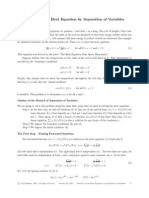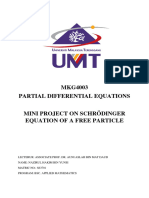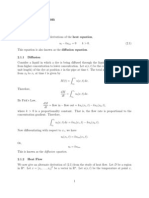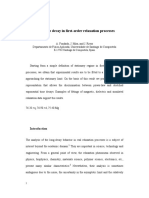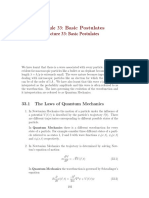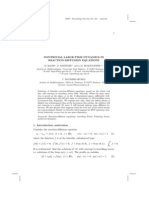Hamiltonian Mechanics Unter Besonderer Ber Ucksichtigung Der H Ohreren Lehranstalten
Hamiltonian Mechanics Unter Besonderer Ber Ucksichtigung Der H Ohreren Lehranstalten
Uploaded by
Ion CaciulaCopyright:
Available Formats
Hamiltonian Mechanics Unter Besonderer Ber Ucksichtigung Der H Ohreren Lehranstalten
Hamiltonian Mechanics Unter Besonderer Ber Ucksichtigung Der H Ohreren Lehranstalten
Uploaded by
Ion CaciulaOriginal Description:
Original Title
Copyright
Available Formats
Share this document
Did you find this document useful?
Is this content inappropriate?
Copyright:
Available Formats
Hamiltonian Mechanics Unter Besonderer Ber Ucksichtigung Der H Ohreren Lehranstalten
Hamiltonian Mechanics Unter Besonderer Ber Ucksichtigung Der H Ohreren Lehranstalten
Uploaded by
Ion CaciulaCopyright:
Available Formats
Hamiltonian Mechanics unter besonderer
Ber ucksichtigung der h ohreren Lehranstalten
Ivar Ekeland
1
, Roger Temam
2
Jerey Dean, David Grove, Craig Chambers,
Kim B. Bruce, and Elsa Bertino
1
Princeton University, Princeton NJ 08544, USA,
I.Ekeland@princeton.edu,
WWW home page: http://users/~iekeland/web/welcome.html
2
Universite de Paris-Sud, Laboratoire dAnalyse Numerique, B atiment 425,
F-91405 Orsay Cedex, France
Abstract. The abstract should summarize the contents of the paper
using at least 70 and at most 150 words. It will be set in 9-point font
size and be inset 1.0 cm from the right and left margins. There will be
two blank lines before and after the Abstract. . . .
Keywords: computational geometry, graph theory, Hamilton cycles
1 Fixed-Period Problems: The Sublinear Case
With this chapter, the preliminaries are over, and we begin the search for periodic
solutions to Hamiltonian systems. All this will be done in the convex case; that
is, we shall study the boundary-value problem
x = JH
(t, x)
x(0) = x(T)
with H(t, ) a convex function of x, going to + when |x| .
1.1 Autonomous Systems
In this section, we will consider the case when the Hamiltonian H(x) is au-
tonomous. For the sake of simplicity, we shall also assume that it is C
1
.
We shall rst consider the question of nontriviality, within the general frame-
work of (A
, B
)-subquadratic Hamiltonians. In the second subsection, we shall
look into the special case when H is (0, b
)-subquadratic, and we shall try to
derive additional information.
The General Case: Nontriviality. We assume that H is (A
, B
)-sub-
quadratic at innity, for some constant symmetric matrices A
and B
, with
B
positive denite. Set:
: = smallest eigenvalue of B
(1)
: = largest negative eigenvalue of J
d
dt
+A
. (2)
Theorem 1 tells us that if + < 0, the boundary-value problem:
x = JH
(x)
x(0) = x(T)
(3)
has at least one solution x, which is found by minimizing the dual action func-
tional:
(u) =
_
T
o
_
1
2
_
1
o
u, u
_
+N
(u)
_
dt (4)
on the range of , which is a subspace R()
2
L
with nite codimension. Here
N(x) := H(x)
1
2
(A
x, x) (5)
is a convex function, and
N(x)
1
2
((B
) x, x) +c x . (6)
Proposition 1. Assume H
(0) = 0 and H(0) = 0. Set:
:= liminf
x0
2N(x) |x|
2
. (7)
If < < , the solution u is non-zero:
x(t) ,= 0 t . (8)
Proof. Condition (7) means that, for every
> , there is some > 0 such that
|x| N(x)
2
|x|
2
. (9)
It is an exercise in convex analysis, into which we shall not go, to show that
this implies that there is an > 0 such that
f |x| N
(y)
1
2
|y|
2
. (10)
Fig. 1. This is the caption of the gure displaying a white eagle and a white horse on
a snow eld
Since u
1
is a smooth function, we will have |hu
1
|
for h small enough,
and inequality (10) will hold, yielding thereby:
(hu
1
)
h
2
2
1
|u
1
|
2
2
+
h
2
2
1
|u
1
|
2
. (11)
If we choose
close enough to , the quantity
_
1
+
1
_
will be negative, and
we end up with
(hu
1
) < 0 for h ,= 0 small . (12)
On the other hand, we check directly that (0) = 0. This shows that 0 cannot
be a minimizer of , not even a local one. So u ,= 0 and u ,=
1
o
(0) = 0. .
Corollary 1. Assume H is C
2
and (a
, b
)-subquadratic at innity. Let
1
,
. . . ,
N
be the equilibria, that is, the solutions of H
() = 0. Denote by
k
the
smallest eigenvalue of H
(
k
), and set:
:= Min
1
, . . . ,
k
. (13)
If:
T
2
b
< E
_
T
2
a
_
<
T
2
(14)
then minimization of yields a non-constant T-periodic solution x.
We recall once more that by the integer part E[] of IR, we mean the
a ZZ such that a < a + 1. For instance, if we take a
= 0, Corollary 2
tells us that x exists and is non-constant provided that:
T
2
b
< 1 <
T
2
(15)
or
T
_
2
,
2
b
_
. (16)
Proof. The spectrum of is
2
T
ZZ + a
. The largest negative eigenvalue is
given by
2
T
k
o
+a
, where
2
T
k
o
+a
< 0
2
T
(k
o
+ 1) +a
. (17)
Hence:
k
o
= E
_
T
2
a
_
. (18)
The condition < < now becomes:
b
<
2
T
k
o
a
< a
(19)
which is precisely condition (14). .
Lemma 1. Assume that H is C
2
on IR
2n
0 and that H
(x) is non-degenerate
for any x ,= 0. Then any local minimizer x of has minimal period T.
Proof. We know that x, or x + for some constant IR
2n
, is a T-periodic
solution of the Hamiltonian system:
x = JH
(x) . (20)
There is no loss of generality in taking = 0. So (x) ( x) for all x in
some neighbourhood of x in W
1,2
_
IR/TZZ; IR
2n
_
.
But this index is precisely the index i
T
( x) of the T-periodic solution x over
the interval (0, T), as dened in Sect. 2.6. So
i
T
( x) = 0 . (21)
Now if x has a lower period, T/k say, we would have, by Corollary 31:
i
T
( x) = i
kT/k
( x) ki
T/k
( x) +k 1 k 1 1 . (22)
This would contradict (21), and thus cannot happen. .
Notes and Comments. The results in this section are a rened version of [1]; the
minimality result of Proposition 14 was the rst of its kind.
To understand the nontriviality conditions, such as the one in formula (16),
one may think of a one-parameter family x
T
, T
_
2
1
, 2b
1
_
of periodic
solutions, x
T
(0) = x
T
(T), with x
T
going away to innity when T 2
1
,
which is the period of the linearized system at 0.
Table 1. This is the example table taken out of The T
E
Xbook, p. 246
Year World population
8000 B.C. 5,000,000
50 A.D. 200,000,000
1650 A.D. 500,000,000
1945 A.D. 2,300,000,000
1980 A.D. 4,400,000,000
Theorem 1 (Ghoussoub-Preiss). Assume H(t, x) is (0, )-subquadratic at
innity for all > 0, and T-periodic in t
H(t, ) is convex t (23)
H(, x) is Tperiodic x (24)
H(t, x) n(|x|) with n(s)s
1
as s (25)
> 0 , c : H(t, x)
2
|x|
2
+c . (26)
Assume also that H is C
2
, and H
(t, x) is positive denite everywhere. Then
there is a sequence x
k
, k IN, of kT-periodic solutions of the system
x = JH
(t, x) (27)
such that, for every k IN, there is some p
o
IN with:
p p
o
x
pk
,= x
k
. (28)
.
Example 1 (External forcing). Consider the system:
x = JH
(x) +f(t) (29)
where the Hamiltonian H is (0, b
)-subquadratic, and the forcing term is a
distribution on the circle:
f =
d
dt
F +f
o
with F L
2
_
IR/TZZ; IR
2n
_
, (30)
where f
o
:= T
1
_
T
o
f(t)dt. For instance,
f(t) =
kIN
k
, (31)
where
k
is the Dirac mass at t = k and IR
2n
is a constant, ts the pre-
scription. This means that the system x = JH
(x) is being excited by a series
of identical shocks at interval T.
Denition 1. Let A
(t) and B
(t) be symmetric operators in IR
2n
, depending
continuously on t [0, T], such that A
(t) B
(t) for all t.
A Borelian function H : [0, T] IR
2n
IR is called (A
, B
)-subquadratic
at innity if there exists a function N(t, x) such that:
H(t, x) =
1
2
(A
(t)x, x) +N(t, x) (32)
t , N(t, x) is convex with respect to x (33)
N(t, x) n(|x|) with n(s)s
1
+ as s + (34)
c IR : H(t, x)
1
2
(B
(t)x, x) +c x . (35)
If A
(t) = a
I and B
(t) = b
I, with a
IR, we shall say that
H is (a
, b
)-subquadratic at innity. As an example, the function |x|
, with
1 < 2, is (0, )-subquadratic at innity for every > 0. Similarly, the
Hamiltonian
H(t, x) =
1
2
k |k|
2
+|x|
(36)
is (k, k +)-subquadratic for every > 0. Note that, if k < 0, it is not convex.
Notes and Comments. The rst results on subharmonics were obtained by Ra-
binowitz in [5], who showed the existence of innitely many subharmonics both
in the subquadratic and superquadratic case, with suitable growth conditions
on H
. Again the duality approach enabled Clarke and Ekeland in [2] to treat
the same problem in the convex-subquadratic case, with growth conditions on
H only.
Recently, Michalek and Tarantello (see [3] and [4]) have obtained lower bound
on the number of subharmonics of period kT, based on symmetry considerations
and on pinching estimates, as in Sect. 5.2 of this article.
References
1. Clarke, F., Ekeland, I.: Nonlinear oscillations and boundary-value problems for
Hamiltonian systems. Arch. Rat. Mech. Anal. 78, 315333 (1982)
2. Clarke, F., Ekeland, I.: Solutions periodiques, du periode donnee, des equations
hamiltoniennes. Note CRAS Paris 287, 10131015 (1978)
3. Michalek, R., Tarantello, G.: Subharmonic solutions with prescribed minimal period
for nonautonomous Hamiltonian systems. J. Di. Eq. 72, 2855 (1988)
4. Tarantello, G.: Subharmonic solutions for Hamiltonian systems via a ZZ
p
pseudoin-
dex theory. Annali di Matematica Pura (to appear)
5. Rabinowitz, P.: On subharmonic solutions of a Hamiltonian system. Comm. Pure
Appl. Math. 33, 609633 (1980)
Hamiltonian Mechanics2
Ivar Ekeland
1
and Roger Temam
2
1
Princeton University, Princeton NJ 08544, USA
2
Universite de Paris-Sud, Laboratoire dAnalyse Numerique, B atiment 425,
F-91405 Orsay Cedex, France
Abstract. The abstract should summarize the contents of the paper
using at least 70 and at most 150 words. It will be set in 9-point font
size and be inset 1.0 cm from the right and left margins. There will be
two blank lines before and after the Abstract. . . .
Keywords: graph transformations, convex geometry, lattice computa-
tions, convex polygons, triangulations, discrete geometry
1 Fixed-Period Problems: The Sublinear Case
With this chapter, the preliminaries are over, and we begin the search for periodic
solutions to Hamiltonian systems. All this will be done in the convex case; that
is, we shall study the boundary-value problem
x = JH
(t, x)
x(0) = x(T)
with H(t, ) a convex function of x, going to + when |x| .
1.1 Autonomous Systems
In this section, we will consider the case when the Hamiltonian H(x) is au-
tonomous. For the sake of simplicity, we shall also assume that it is C
1
.
We shall rst consider the question of nontriviality, within the general frame-
work of (A
, B
)-subquadratic Hamiltonians. In the second subsection, we shall
look into the special case when H is (0, b
)-subquadratic, and we shall try to
derive additional information.
The General Case: Nontriviality. We assume that H is (A
, B
)-sub-
quadratic at innity, for some constant symmetric matrices A
and B
, with
B
positive denite. Set:
: = smallest eigenvalue of B
(1)
: = largest negative eigenvalue of J
d
dt
+A
. (2)
Theorem 21 tells us that if + < 0, the boundary-value problem:
x = JH
(x)
x(0) = x(T)
(3)
has at least one solution x, which is found by minimizing the dual action func-
tional:
(u) =
_
T
o
_
1
2
_
1
o
u, u
_
+N
(u)
_
dt (4)
on the range of , which is a subspace R()
2
L
with nite codimension. Here
N(x) := H(x)
1
2
(A
x, x) (5)
is a convex function, and
N(x)
1
2
((B
) x, x) +c x . (6)
Proposition 1. Assume H
(0) = 0 and H(0) = 0. Set:
:= liminf
x0
2N(x) |x|
2
. (7)
If < < , the solution u is non-zero:
x(t) ,= 0 t . (8)
Proof. Condition (7) means that, for every
> , there is some > 0 such that
|x| N(x)
2
|x|
2
. (9)
It is an exercise in convex analysis, into which we shall not go, to show that
this implies that there is an > 0 such that
f |x| N
(y)
1
2
|y|
2
. (10)
Fig. 1. This is the caption of the gure displaying a white eagle and a white horse on
a snow eld
Since u
1
is a smooth function, we will have |hu
1
|
for h small enough,
and inequality (10) will hold, yielding thereby:
(hu
1
)
h
2
2
1
|u
1
|
2
2
+
h
2
2
1
|u
1
|
2
. (11)
If we choose
close enough to , the quantity
_
1
+
1
_
will be negative, and
we end up with
(hu
1
) < 0 for h ,= 0 small . (12)
On the other hand, we check directly that (0) = 0. This shows that 0 cannot
be a minimizer of , not even a local one. So u ,= 0 and u ,=
1
o
(0) = 0. .
Corollary 1. Assume H is C
2
and (a
, b
)-subquadratic at innity. Let
1
,
. . . ,
N
be the equilibria, that is, the solutions of H
() = 0. Denote by
k
the
smallest eigenvalue of H
(
k
), and set:
:= Min
1
, . . . ,
k
. (13)
If:
T
2
b
< E
_
T
2
a
_
<
T
2
(14)
then minimization of yields a non-constant T-periodic solution x.
We recall once more that by the integer part E[] of IR, we mean the
a ZZ such that a < a + 1. For instance, if we take a
= 0, Corollary 2
tells us that x exists and is non-constant provided that:
T
2
b
< 1 <
T
2
(15)
or
T
_
2
,
2
b
_
. (16)
Proof. The spectrum of is
2
T
ZZ + a
. The largest negative eigenvalue is
given by
2
T
k
o
+a
, where
2
T
k
o
+a
< 0
2
T
(k
o
+ 1) +a
. (17)
Hence:
k
o
= E
_
T
2
a
_
. (18)
The condition < < now becomes:
b
<
2
T
k
o
a
< a
(19)
which is precisely condition (14). .
Lemma 1. Assume that H is C
2
on IR
2n
0 and that H
(x) is non-degenerate
for any x ,= 0. Then any local minimizer x of has minimal period T.
Proof. We know that x, or x + for some constant IR
2n
, is a T-periodic
solution of the Hamiltonian system:
x = JH
(x) . (20)
There is no loss of generality in taking = 0. So (x) ( x) for all x in
some neighbourhood of x in W
1,2
_
IR/TZZ; IR
2n
_
.
But this index is precisely the index i
T
( x) of the T-periodic solution x over
the interval (0, T), as dened in Sect. 2.6. So
i
T
( x) = 0 . (21)
Now if x has a lower period, T/k say, we would have, by Corollary 31:
i
T
( x) = i
kT/k
( x) ki
T/k
( x) +k 1 k 1 1 . (22)
This would contradict (21), and thus cannot happen. .
Notes and Comments. The results in this section are a rened version of 1980;
the minimality result of Proposition 14 was the rst of its kind.
To understand the nontriviality conditions, such as the one in formula (16),
one may think of a one-parameter family x
T
, T
_
2
1
, 2b
1
_
of periodic
solutions, x
T
(0) = x
T
(T), with x
T
going away to innity when T 2
1
,
which is the period of the linearized system at 0.
Table 1. This is the example table taken out of The T
E
Xbook, p. 246
Year World population
8000 B.C. 5,000,000
50 A.D. 200,000,000
1650 A.D. 500,000,000
1945 A.D. 2,300,000,000
1980 A.D. 4,400,000,000
Theorem 1 (Ghoussoub-Preiss). Assume H(t, x) is (0, )-subquadratic at
innity for all > 0, and T-periodic in t
H(t, ) is convex t (23)
H(, x) is Tperiodic x (24)
H(t, x) n(|x|) with n(s)s
1
as s (25)
> 0 , c : H(t, x)
2
|x|
2
+c . (26)
Assume also that H is C
2
, and H
(t, x) is positive denite everywhere. Then
there is a sequence x
k
, k IN, of kT-periodic solutions of the system
x = JH
(t, x) (27)
such that, for every k IN, there is some p
o
IN with:
p p
o
x
pk
,= x
k
. (28)
.
Example 1 (External forcing). Consider the system:
x = JH
(x) +f(t) (29)
where the Hamiltonian H is (0, b
)-subquadratic, and the forcing term is a
distribution on the circle:
f =
d
dt
F +f
o
with F L
2
_
IR/TZZ; IR
2n
_
, (30)
where f
o
:= T
1
_
T
o
f(t)dt. For instance,
f(t) =
kIN
k
, (31)
where
k
is the Dirac mass at t = k and IR
2n
is a constant, ts the pre-
scription. This means that the system x = JH
(x) is being excited by a series
of identical shocks at interval T.
Denition 1. Let A
(t) and B
(t) be symmetric operators in IR
2n
, depending
continuously on t [0, T], such that A
(t) B
(t) for all t.
A Borelian function H : [0, T] IR
2n
IR is called (A
, B
)-subquadratic
at innity if there exists a function N(t, x) such that:
H(t, x) =
1
2
(A
(t)x, x) +N(t, x) (32)
t , N(t, x) is convex with respect to x (33)
N(t, x) n(|x|) with n(s)s
1
+ as s + (34)
c IR : H(t, x)
1
2
(B
(t)x, x) +c x . (35)
If A
(t) = a
I and B
(t) = b
I, with a
IR, we shall say that
H is (a
, b
)-subquadratic at innity. As an example, the function |x|
, with
1 < 2, is (0, )-subquadratic at innity for every > 0. Similarly, the
Hamiltonian
H(t, x) =
1
2
k |k|
2
+|x|
(36)
is (k, k +)-subquadratic for every > 0. Note that, if k < 0, it is not convex.
Notes and Comments. The rst results on subharmonics were obtained by Rabi-
nowitz in 1985, who showed the existence of innitely many subharmonics both
in the subquadratic and superquadratic case, with suitable growth conditions
on H
. Again the duality approach enabled Clarke and Ekeland in 1981 to treat
the same problem in the convex-subquadratic case, with growth conditions on
H only.
Recently, Michalek and Tarantello (see Michalek, R., Tarantello, G. 1982 and
Tarantello, G. 1983) have obtained lower bound on the number of subharmonics
of period kT, based on symmetry considerations and on pinching estimates, as
in Sect. 5.2 of this article.
References
Clarke, F., Ekeland, I.: Nonlinear oscillations and boundary-value problems for Hamil-
tonian systems. Arch. Rat. Mech. Anal. 78, 315333 (1982)
Clarke, F., Ekeland, I.: Solutions periodiques, du periode donnee, des equations hamil-
toniennes. Note CRAS Paris 287, 10131015 (1978)
Michalek, R., Tarantello, G.: Subharmonic solutions with prescribed minimal period
for nonautonomous Hamiltonian systems. J. Di. Eq. 72, 2855 (1988)
Tarantello, G.: Subharmonic solutions for Hamiltonian systems via a ZZ
p
pseudoindex
theory. Annali di Matematica Pura (to appear)
Rabinowitz, P.: On subharmonic solutions of a Hamiltonian system. Comm. Pure Appl.
Math. 33, 609633 (1980)
Subject Index
Absorption 327
Absorption of radiation 289292, 299,
300
Actinides 244
Aharonov-Bohm eect 142146
Angular momentum 101112
algebraic treatment 391396
Angular momentum addition 185193
Angular momentum commutation rela-
tions 101
Angular momentum quantization 910,
104106
Angular momentum states 107, 321,
391396
Antiquark 83
-rays 101103
Atomic theory 810, 219249, 327
Average value
(see also Expectation value) 1516, 25, 34,
37, 357
Baker-Hausdor formula 23
Balmer formula 8
Balmer series 125
Baryon 220, 224
Basis 98
Basis system 164, 376
Bell inequality 379381, 382
Bessel functions 201, 313, 337
spherical 304306, 309, 313314, 322
Bound state 7374, 7879, 116118, 202,
267, 273, 306, 348, 351
Boundary conditions 59, 70
Bra 159
Breit-Wigner formula 80, 84, 332
Brillouin-Wigner perturbation theory
203
Cathode rays 8
Causality 357359
Center-of-mass frame 232, 274, 338
Central potential 113135, 303314
Centrifugal potential 115116, 323
Characteristic function 33
Clebsch-Gordan coecients 191193
Cold emission 88
Combination principle, Ritzs 124
Commutation relations 27, 44, 353, 391
Commutator 2122, 27, 44, 344
Compatibility of measurements 99
Complete orthonormal set 31, 40, 160,
360
Complete orthonormal system, see
Complete orthonormal set
Complete set of observables, see Complete
set of operators
Eigenfunction 34, 46, 344346
radial 321
calculation 322324
EPR argument 377378
Exchange term 228, 231, 237, 241, 268,
272
f-sum rule 302
Fermi energy 223
H
+
2
molecule 26
Half-life 65
Holzwarth energies 68
You might also like
- Physics RubricsDocument8 pagesPhysics Rubricsdeomonhunter1100% (2)
- TRD 301 Annex 1 DesignDocument14 pagesTRD 301 Annex 1 Designksjin0226100% (1)
- Deflections of Timoshenko Beam With Varying Cross-SectionDocument19 pagesDeflections of Timoshenko Beam With Varying Cross-SectionPablo RicoNo ratings yet
- Mixer Positioning PrinciplesDocument30 pagesMixer Positioning PrinciplesGustavo1722No ratings yet
- H2-Optimal Control - Lec8Document83 pagesH2-Optimal Control - Lec8stara123warNo ratings yet
- Existence Theory and Properties of Solutions: TH (N) (N THDocument24 pagesExistence Theory and Properties of Solutions: TH (N) (N THGeof180No ratings yet
- Segmentacin de Venas: 1 Fixed-Period Problems: The Sublinear CaseDocument6 pagesSegmentacin de Venas: 1 Fixed-Period Problems: The Sublinear CaseFer AgrazNo ratings yet
- Lecture7 PDFDocument16 pagesLecture7 PDFMato KankarašNo ratings yet
- Heat EquationDocument4 pagesHeat EquationFatima SadikNo ratings yet
- Lec8h2 OptimalControl PDFDocument83 pagesLec8h2 OptimalControl PDFAnonymous WkbmWCa8MNo ratings yet
- Hamiltonian Mechanics Unter Besonderer Ber Ucksichtigung Der H Oheren LehranstaltenDocument6 pagesHamiltonian Mechanics Unter Besonderer Ber Ucksichtigung Der H Oheren LehranstaltenvelayyaNo ratings yet
- Ito's and Tanaka's Type Formulae For The Stochastic Heat Equation: The Linear CaseDocument25 pagesIto's and Tanaka's Type Formulae For The Stochastic Heat Equation: The Linear CaselycancapitalNo ratings yet
- Tut 5 On PDEsDocument6 pagesTut 5 On PDEsRohan ZendeNo ratings yet
- S63701 MiniProject MKG4003Document5 pagesS63701 MiniProject MKG4003s63701No ratings yet
- QB Second OrderDocument9 pagesQB Second OrderprofjnapolesNo ratings yet
- Electronic Journal of Qualitative Theory of Differential Equations 2007, No. 21, 1-10 HTTP://WWW - Math.u-Szeged - Hu/ejqtdeDocument10 pagesElectronic Journal of Qualitative Theory of Differential Equations 2007, No. 21, 1-10 HTTP://WWW - Math.u-Szeged - Hu/ejqtdeLuis FuentesNo ratings yet
- APM3344Document17 pagesAPM3344José VanterlerNo ratings yet
- Classes of Operators On Hilbert Spaces Extended Lecture NotesDocument24 pagesClasses of Operators On Hilbert Spaces Extended Lecture Notestalha azanNo ratings yet
- 2017optimalcontrol Solution AprilDocument4 pages2017optimalcontrol Solution Aprilenrico.michelatoNo ratings yet
- Heat Ex Homo Rad1Document6 pagesHeat Ex Homo Rad1Carlos Andres Theran SuarezNo ratings yet
- Soluition of Assignment 2 Summer 2011Document11 pagesSoluition of Assignment 2 Summer 2011Ruishan Liu100% (1)
- Heat EquationDocument124 pagesHeat Equationmario.sergionjr4394No ratings yet
- Analisa NumerikDocument62 pagesAnalisa Numerikmohammad affanNo ratings yet
- Solutions PDEDocument5 pagesSolutions PDERizwan 106No ratings yet
- Assignment 5Document2 pagesAssignment 5aayush.5.parasharNo ratings yet
- MIT8 04S16 ps3 2016Document4 pagesMIT8 04S16 ps3 2016Fabian M Vargas FontalvoNo ratings yet
- PDE Elementary PDE TextDocument152 pagesPDE Elementary PDE TextThumper KatesNo ratings yet
- Nonlocal Fractional Evolution Inclusions of OrderDocument17 pagesNonlocal Fractional Evolution Inclusions of OrderSoumyajit GhoshNo ratings yet
- Solving The Heat Equation by Separation of VariablesDocument4 pagesSolving The Heat Equation by Separation of VariablesJasper CookNo ratings yet
- On A Nonlocal Nonlinear Schrödinger Equation With Self-Induced Parity-Time-Symmetric PotentialDocument10 pagesOn A Nonlocal Nonlinear Schrödinger Equation With Self-Induced Parity-Time-Symmetric PotentialMuhammad IkhwanNo ratings yet
- Exercise Sheet-1Document10 pagesExercise Sheet-1pauline chauveauNo ratings yet
- MIT18 S096F13 Lecnote21Document7 pagesMIT18 S096F13 Lecnote21piwipebaNo ratings yet
- An Algorithm For Computing Risk Parity Weights - F. SpinuDocument6 pagesAn Algorithm For Computing Risk Parity Weights - F. SpinucastjamNo ratings yet
- J Exmath 2005 01 020Document8 pagesJ Exmath 2005 01 020Javier BenetNo ratings yet
- Solutions To Problems For 2D & 3D Heat and Wave EquationsDocument15 pagesSolutions To Problems For 2D & 3D Heat and Wave EquationscemnuyNo ratings yet
- Singular Traces of An Integral Operator Related To The Riemann HypothesisDocument18 pagesSingular Traces of An Integral Operator Related To The Riemann HypothesisEmperatriz VelaNo ratings yet
- Functional Analysis: Gerald TeschlDocument44 pagesFunctional Analysis: Gerald TeschlMehwish QadirNo ratings yet
- On The Expected Volume of The Wiener Sausage: Doi: 10.2969/jmsj/06241113Document24 pagesOn The Expected Volume of The Wiener Sausage: Doi: 10.2969/jmsj/06241113Eashvar SrinivasanNo ratings yet
- Exercises For TFFY54 PDFDocument25 pagesExercises For TFFY54 PDFFábio Sin TierraNo ratings yet
- Optimal Control (Course Code: 191561620)Document4 pagesOptimal Control (Course Code: 191561620)Abdesselem BoulkrouneNo ratings yet
- Some Coincidence and Fixed Point Results For Hybrid ContractionDocument14 pagesSome Coincidence and Fixed Point Results For Hybrid ContractionAlexander DeckerNo ratings yet
- RMJ 2022 52 2257Document16 pagesRMJ 2022 52 225718838789077No ratings yet
- Solutions To Assignment 4Document11 pagesSolutions To Assignment 4Sandeep SajuNo ratings yet
- Handout 6 Partial Differential Equations: Separation of VariablesDocument2 pagesHandout 6 Partial Differential Equations: Separation of VariablesPaul BenedictNo ratings yet
- Wave Equation and Heat Equation-NewDocument12 pagesWave Equation and Heat Equation-NewRabsimranSinghNo ratings yet
- An Extended Method of Quasilinearization For Nonlinear Impulsive Differential Equations With A Nonlinear Three-Point Boundary ConditionDocument19 pagesAn Extended Method of Quasilinearization For Nonlinear Impulsive Differential Equations With A Nonlinear Three-Point Boundary ConditionLuis FuentesNo ratings yet
- Sol hmw3Document5 pagesSol hmw3Martín FigueroaNo ratings yet
- Example of Heat Equation Solved For ExamDocument3 pagesExample of Heat Equation Solved For ExamAadarsh UpretiNo ratings yet
- Lecture Notes For Math 524: Chapter 1. Existence and Uniqueness TheoremsDocument14 pagesLecture Notes For Math 524: Chapter 1. Existence and Uniqueness TheoremsOsama Hamed0% (1)
- Note 1 AnnotatedDocument20 pagesNote 1 AnnotatedNancy QNo ratings yet
- Solution of Wave EquationDocument7 pagesSolution of Wave Equationjeetendra222523No ratings yet
- Existence of Almost Automorphic Solutions of Neutral Functional Differential EquationDocument8 pagesExistence of Almost Automorphic Solutions of Neutral Functional Differential Equationsghoul795No ratings yet
- Chapter2 PDFDocument11 pagesChapter2 PDFDilham WahyudiNo ratings yet
- Power-Law Decay in First-Order Relaxation ProcessesDocument21 pagesPower-Law Decay in First-Order Relaxation ProcessesrumiNo ratings yet
- Lec 33 PDFDocument3 pagesLec 33 PDFShubham KumarNo ratings yet
- Lec 33 PDFDocument3 pagesLec 33 PDFShubham KumarNo ratings yet
- The Maximum and Minimum PrincipleDocument6 pagesThe Maximum and Minimum PrincipleSelvin DavisNo ratings yet
- Structure of A Class of Singular Boundary Value Problem With Superlinear EffectDocument12 pagesStructure of A Class of Singular Boundary Value Problem With Superlinear EffectLuis FuentesNo ratings yet
- hw6 SolnsDocument4 pageshw6 Solnsfree_progNo ratings yet
- Mutual Control 7Document16 pagesMutual Control 7andrei.stanNo ratings yet
- Equadiff Vienne 2007Document6 pagesEquadiff Vienne 2007hhedfiNo ratings yet
- Green's Function Estimates for Lattice Schrödinger Operators and ApplicationsFrom EverandGreen's Function Estimates for Lattice Schrödinger Operators and ApplicationsNo ratings yet
- The Direct Stiffness Method: Assembly and SolutionDocument14 pagesThe Direct Stiffness Method: Assembly and SolutionShubhankar BhowmickNo ratings yet
- Question Bank For Power System Transients1Document5 pagesQuestion Bank For Power System Transients1Prabha KaruppuchamyNo ratings yet
- PHY50A-Course Support MaterialDocument22 pagesPHY50A-Course Support MaterialShamma AhmedNo ratings yet
- Magick of The FutureDocument66 pagesMagick of The FutureBbenjiNo ratings yet
- Engineering Mathematics IDocument3 pagesEngineering Mathematics INikash SubediNo ratings yet
- Coordination Compounds Multiple C. QuesDocument6 pagesCoordination Compounds Multiple C. QuesShivam KumarNo ratings yet
- Ieee Standard Test Procedures and Bases For Geigermueller CounterDocument25 pagesIeee Standard Test Procedures and Bases For Geigermueller CounterMariana CarvalhoNo ratings yet
- Marko Rodin's Vortex MathematicsDocument7 pagesMarko Rodin's Vortex MathematicsScribdTranslationsNo ratings yet
- Diffraction: Diffraction Refers To Various Phenomena That Occur When ADocument5 pagesDiffraction: Diffraction Refers To Various Phenomena That Occur When AshohobiNo ratings yet
- A250647 PDFDocument163 pagesA250647 PDFvishnuNo ratings yet
- Sarhad University of Science Project ReportDocument33 pagesSarhad University of Science Project ReportDanial NaeemNo ratings yet
- Physics, Paper - Ii Model Question Paper: Part - IIIDocument3 pagesPhysics, Paper - Ii Model Question Paper: Part - IIIPraneeth RayaluNo ratings yet
- Chapter - 4 - Techniques of CKT AnalysisDocument34 pagesChapter - 4 - Techniques of CKT AnalysisKopano MalomboNo ratings yet
- BTech - R19 - I YEAR Course Structure For All ProgrammesDocument7 pagesBTech - R19 - I YEAR Course Structure For All ProgrammesPeddireddy SahithNo ratings yet
- Materials: Design, Fabrication, and Properties of High Damping Metal Matrix Composites-A ReviewDocument20 pagesMaterials: Design, Fabrication, and Properties of High Damping Metal Matrix Composites-A Reviewlakshmigsr6610No ratings yet
- 3, Fission Practice Questions SolutionsDocument2 pages3, Fission Practice Questions SolutionsAshuNo ratings yet
- CH 5 - Beams and Frames - Part 2Document25 pagesCH 5 - Beams and Frames - Part 2Fawzia HassanNo ratings yet
- 99999Document22 pages99999Popovici DraganNo ratings yet
- Key Words: Shunt Capacitor Bank, Externally-Fused Capacitor Bank, Fuseless Capacitor Bank, ElementDocument15 pagesKey Words: Shunt Capacitor Bank, Externally-Fused Capacitor Bank, Fuseless Capacitor Bank, ElementMuhammad AliNo ratings yet
- (In A Nutshell) Carlos A. BertulaniDocument2 pages(In A Nutshell) Carlos A. BertulaniPedro RicardoNo ratings yet
- Lakhovsky, Frequency AnalysisDocument7 pagesLakhovsky, Frequency AnalysisDukof Fokud80% (5)
- Guidance Test SpecimensDocument10 pagesGuidance Test SpecimensferrarifanaticNo ratings yet
- Activity 2 Let's SimulateDocument3 pagesActivity 2 Let's SimulateResa Consigna MagusaraNo ratings yet
- Long Test in Science and Technology IIIDocument3 pagesLong Test in Science and Technology IIIjahp_136No ratings yet
- Site Characterization Using Spectral Analysis of Surface Waves (Sasw)Document24 pagesSite Characterization Using Spectral Analysis of Surface Waves (Sasw)Prantik MaityNo ratings yet
- On The Viscosity of Energol 320Document12 pagesOn The Viscosity of Energol 320Charlie HanniganNo ratings yet








